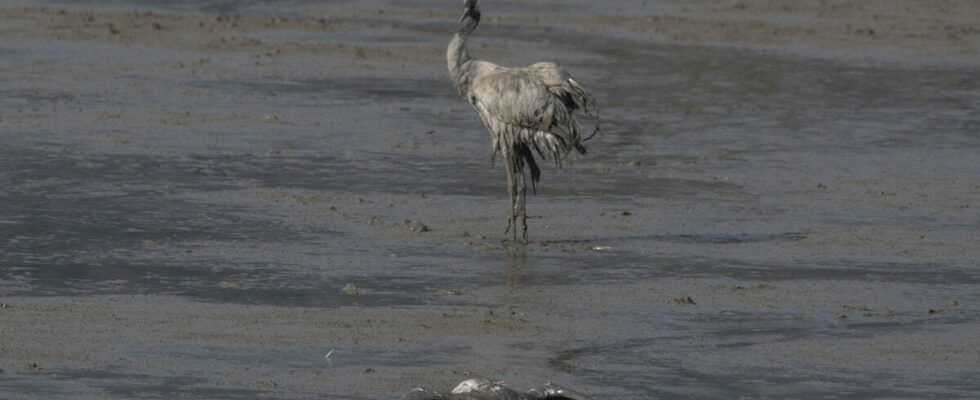On the shores of Hula Lake in northern Israel, wild cranes are flapping their wings. On recent images, we can see the birds stagger before collapsing to the ground. Every year, cases of avian flu are recorded there. But in 2021, the situation is particularly alarming, with an exceptional number of reported deaths. More than 5,200 cranes have died after contracting the H5N1 virus since October, according to the Israel Nature and Parks Authority. And that number is only expected to increase. Avian specialist in the Israel Nature and Parks Authority, Ohad Hatsofe believes that “10,000 cranes would be infected”.
Between the Lebanese mountains and those of Naftali, this lake represents a major stage in the annual migratory journey of 100,000 cranes. The shallow depth of the lake allows the birds to rest there before setting out again to reach the hot corners of Africa. But this year, the epidemic is keeping them to the ground: “It is estimated, to date, that a fifth of the crane population in Israel has been affected by the virus”, specifies Uri Naveh, deputy director of the same scientific department.
Low risks
In the sumptuous landscape, formed by a volcanic eruption thousands of years ago, scientists in white coveralls pick up the last corpses floating on the surface. A park spokesperson said workers were removing these carcasses “as quickly as possible”, for “That they do not infect other wild animals, such as vultures who delight in these dead animals”. Almost 400 species are recorded in this three hectare wilderness area. Israeli Minister of Environmental Protection Tamar Zandberg expressed alarm on Twitter about the situation: “This is the most serious damage to wildlife in the history of the country. The extent of the damage is yet to be determined. ”
The first signs of an H5N1 outbreak in Israel were seen in the fall, after cases were reported on October 18 in Moshav Nahalal, in the Jezreel Valley, 60 km southwest of Hula on the fly. ‘bird, according to The Times of Israel.
A very low risk of contamination for humans
Other epidemic foci were then detected in several henhouses in the north of the country. Local media have claimed that more than half a million laying hens from Moshav Margaliot farm, located 12 km from the lake, have been slaughtered to contain the health crisis. This farm supplies 7% of the eggs consumed in Israel. The Agriculture Ministry announced on Sunday the suspension of trade in eggs from neighboring farms to prevent Israelis from being contaminated.
For the moment, no case of avian influenza transmission to humans has been detected, the risk of contamination remaining very low. But the Israel Nature and Parks Authority said the H5N1 viral strain “Can be dangerous if contracted by humans”. So, says Ohad Hatsofe, the disease “Is fatal for 36 to 50% of those infected”. According to the WHO, this H5N1 strain has killed more than 450 people, mostly in Indonesia, Egypt and Vietnam since 2003.
